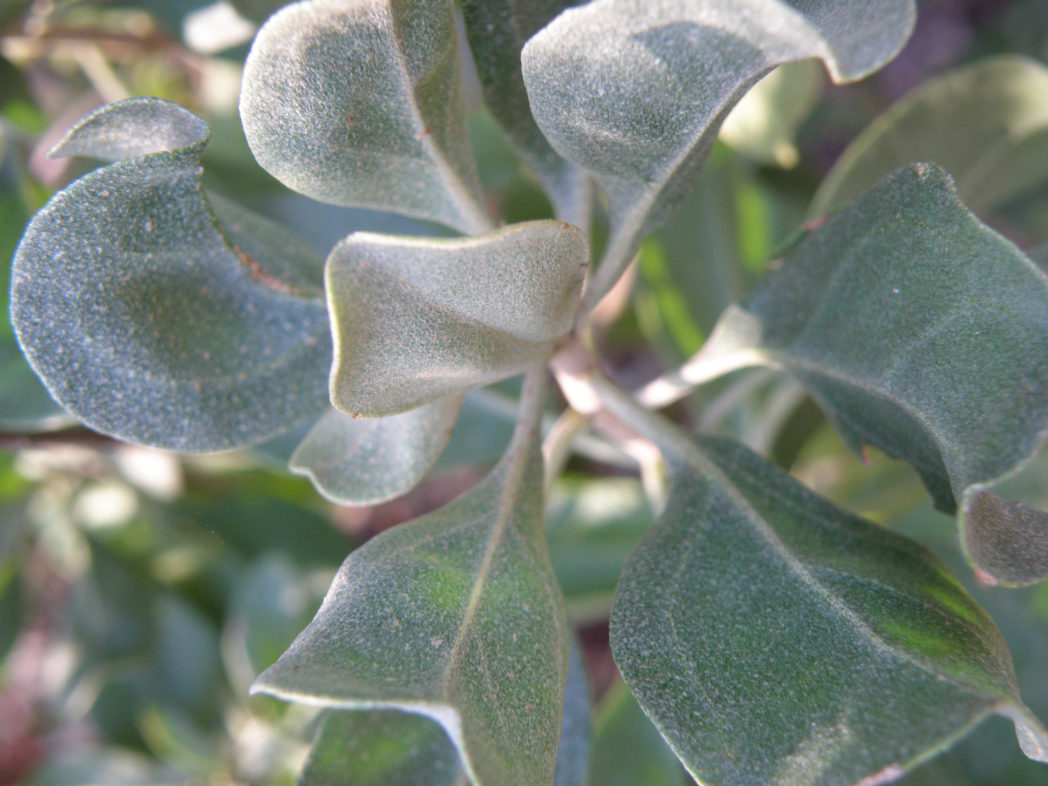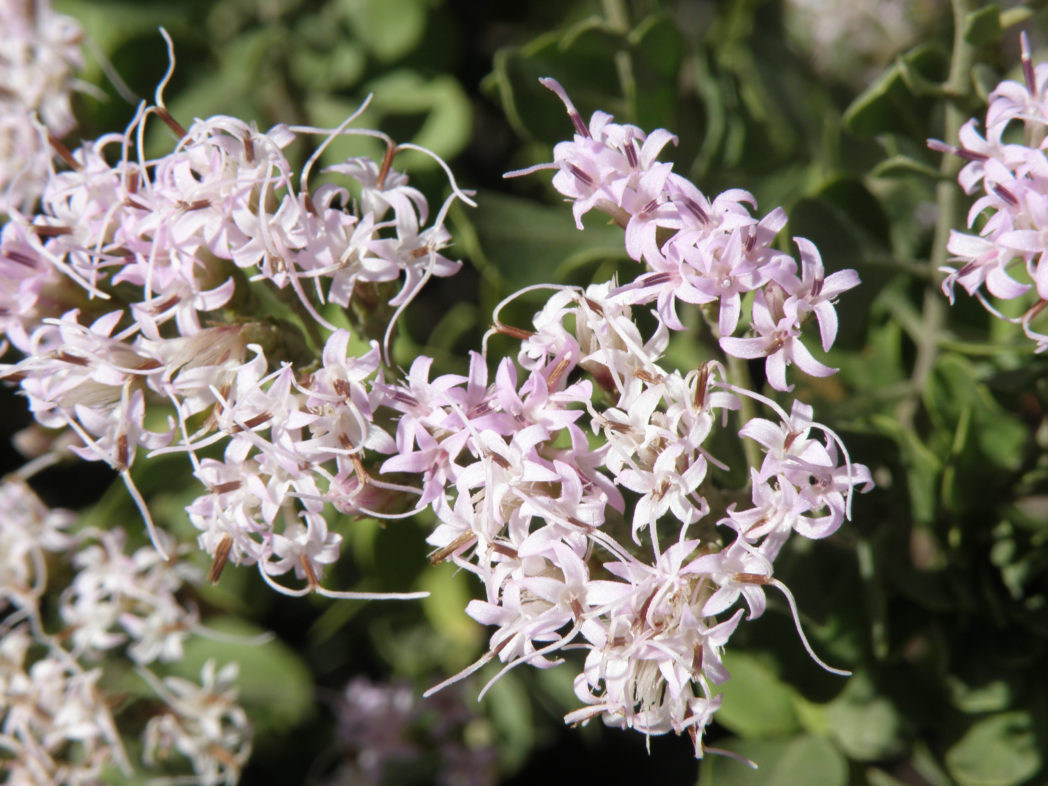Garberia
Pictured above: Garberia (Garberia heterophylla) by Stacey Matrazzo. Click on terms for botanical definitions. View post as a PDF.
Garberia (Garberia heterophylla) is unlike most species in the Asteraceae family in that its growth habit is woody and shrubby rather than herbaceous. Garberia is endemic to Florida’s north and central peninsula, and occurs naturally in scrub and xeric hammocks. It typically flowers in late fall but has been known to flower sparsely throughout the year. It is a state-listed threatened species and is part of the Eupatorieae tribe, whose members produce flowers consisting of only disk and no ray florets. It is an excellent nectar source for many butterflies and bees.
Garberia’s inflorescences are large, showy clusters of pink to purple flowers. Individual disk florets are tubular and have conspicuously extended styles. Ray florets are absent. Leaves are oval to obovate with undulating entire margins and a distinctly grayish-green hue. They are alternately arranged. Bark is also grayish in color. Seeds are born in tiny achenes.
The genus name Garberia honors American botanist Abraham Garber (1838–1881). The species epithet heterophylla is from the Greek hetero, which means “diverse,” and phúllon, meaning “leaf.”

Family: Asteraceae (Aster, daisy or composite family)
Native range: Clay and Putnam counties, Central Florida south to Highlands County
To see where natural populations of Garberia have been vouchered, visit florida.plantatlas.usf.edu.
Lifespan: Perennial
Soil: Dry, well-drained, sandy acidic soil
Exposure: Full sun to minimal shade
Growth habit: 1–5’ feet tall with equal spread
Propagation: Sow seed in winter and cover lightly
Florida regions of landscape suitability: North (peninsular), Central
Garden tips: Garberia works well in dry, sunny areas in a mixed shrub bed of as a single specimen. In normal conditions, it is evergreen and is particularly long-lived. It is drought-tolerant and, once established, requires little to no irrigation.
Garberia is often available at nurseries that specialize in native plants. Visit PlantRealFlorida.org to find a native nursery on your area.
Learn more about Garberia from the Florida Native Plant Society and the Institute for Regional Conservation.

